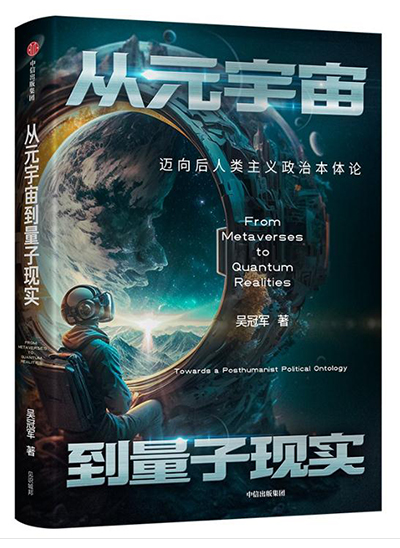A reflection on post-humanism

From Metaverses to Quantum Realities: Towards a Posthumanist Political Ontology
From Metaverses to Quantum Realities: Towards a Posthumanist Political Ontology, by Wu Guanjun, dean of the School of Politics and International Relations at East China Normal University, makes its contribution in terms of “great politics” “great imagination” and “great art.”
“Great politics,” originally a Nietzschean concept, is oriented towards physiology and psychology, and is approached from the standpoint of “natural man.” By contrast, in Wu’s “great politics,” the so-called “post-humanist political ontology” is built upon quantum theory and cosmology, and is therefore an entirely disparate notion.
“Great imagination” is demonstrated through a series of novel and fashionable concepts and topics, such as the metaverse, metaphysics, the Anthropocene, the boundless universe, the mathematical universe, the participatory universe, and quantum reality. Wu strives to conceive a grand political philosophy about virtual reality and the future world by focusing on the six channels of “future+” “capital+” “image+” “reality+” “world+” and “politics+.”
In the face of this rapidly changing new world of technology and new forms of artificial intelligence, it is imperative to stimulate imagination and innovate with discourse. The conceptual approach of traditional philosophy alone is insufficient. This work must be done by scholars, and Wu is among the pioneers. His vision is bold and optimistic, representing a form of “great imagination.”
“Great art” is associated with the dimension of “great imagination.” Wu’s book can be regarded as an “artistic text,” which attempts to break through “anthropologistic social sciences,” explore the “intra-acting” of posthuman individual agents, and participate in what he calls the “worlding” [wording/coding + playing/intra-acting]. This is actually a meaningful implementation of the aesthetic political practice in the sense of “contemporary art” by Joseph Beuys—“social sculpture.” Art is essential when philosophy and theoretical research are becoming increasingly difficult and new technologies and phenomena demand that we continuously construct hypothetical ideas about the future world. In this regard, Wu’s work presents his creativity and remarkable results.
In Markus Gabriel’s Why the World Does not Exist, the so-called “new realism” sounds mysterious, but the key theory of “fields of sense” is actually in line with Heidegger’s concept of “world.” Like Wu, and in an even more affirmative tone, Gabriel argued that this world does not exist. But does this world really not exist? Is it not real? Today’s reality and world is no longer an absolutist reality and world, and we must acknowledge the pluralism and relativism of such a world. Reality is diverse and fragmented, and absolute reality may not exist. However, a plural, relative reality does not necessarily mean that the world is not real or does not exist. The world is still “real”—but relatively real. It is inadvisable to go from one extreme to another.
Sun Zhouxing is a professor from the School of Philosophy at Zhejiang University.
Edited by YANG LANLAN
